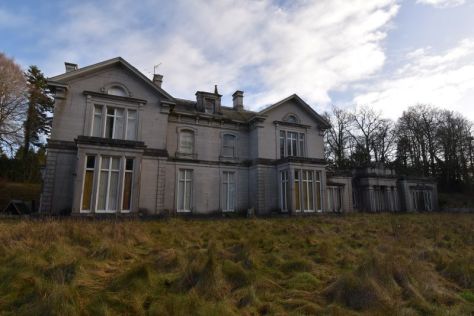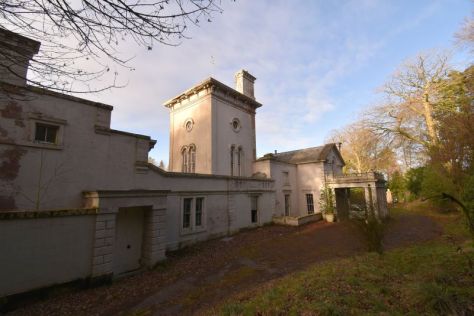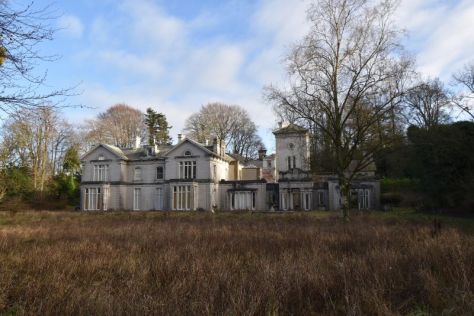“Graffiti has been daubed over the walls, and beer cans and broken bottles are strewn across the floors along with discarded sleeping bags.” A country house built on the proceeds of opium and ruined by cannabis.

Flass, also called Flass House, is a large Grade II* listed country house near the village of Maulds Meaburn in Cumbria. At last, and not before time, it is going to be auctioned by Harman Healy with a guide price of just £460,000+ on 30 January.
Someone is going to get a bargain, considering this was marketed for £1.5 million in 2014. Someone is also going to get a shock. There are no interior images from the auctioneers, probably deliberate, as it’s now described as “being in an utterly wrecked, vandalised condition.”

Flass House was rebuilt in 1851 for wealthy merchant brothers and tea and opium magnets Lancelot and Wilkinson Dent, possibly incorporating parts of an 18th century house. No expense was spared in the house, with door handles fashioned out of ivory and balustrades made out of French wrought iron. It was designed by architects Mr Grey and later by Mr G. Mair and included furnishings by Gillows of Lancaster and London.
Lancelot Dent, the senior partner of Dent & Co, headquartered in Canton, had taken over the business when his older brother Thomas departed in 1831. The company had established trade with China, and after the break up of the East India Company, rendered their services to the British Government during the first Chinese War.
Afterwards, branch houses were established at all the open ports, and it was the first company to run a line of steamers from Calcutta to Hong Kong. Lancelot held a powerful hold over some agency houses buying opium from the Calcutta auction, including Carr, Tagore and Company, managed by Bengali merchant Dwarkanath Tagore. He died at Cheltenham in 1853. His younger brother, Wilkinson Dent, joined the firm in 1827 and twenty years later, on the death of their sister in 1847, both had succeeded to the Flass estate.
The unmarried brothers, Lancelot and Wilkinson, both retired to Flass Park. The business passed to their nephews, John Dent and Alfred (later Sir Alfred) Dent, while the Flass estate passed to another nephew, Thomas Dent.
Flass remained in the Dent family until 1973, when it was sold to banker, historian and writer Frank Welsh for £17,000. It was purchased from Welsh in 1982 for £115,000 by the retired solicitor Malcolm Whiteside, who ran the property as a care home with his wife, Mary. A change in fire legislation meant that this was no longer possible, and the house was put up for sale again; Whiteside still owned the house in the late 1990s, when it was put up for sale for around £750,000.
It was sold in 2000 to singer-songwriter Christine Holmes and her husband Paul Davies who ran it as a performing arts school.
After the couple divorced, Davies took control of the mansion and became implicated with a gang of drug dealers in 2011. Davies and his five cohorts were able to grow cannabis with a street value of £5.26 million undetected until a neighbour became suspicious. He was jailed for his role in the crime for three years and eight months in September 2015.


Christine Holmes subsequently took back control of Flass House and after trying and failing to sell the house for £1.5 million, spent £200,000 on renovations to put right the damage done by the drug operation.
Since then it has been a magnet for urban explorers. Said Christine Holmes;- “I think people have been staying in the building and have even been there hiding while I’ve been there. I’m petrified. These are evil people who are breaking into my home. I think it’s becoming a game to them. They are breaking in every day.”





